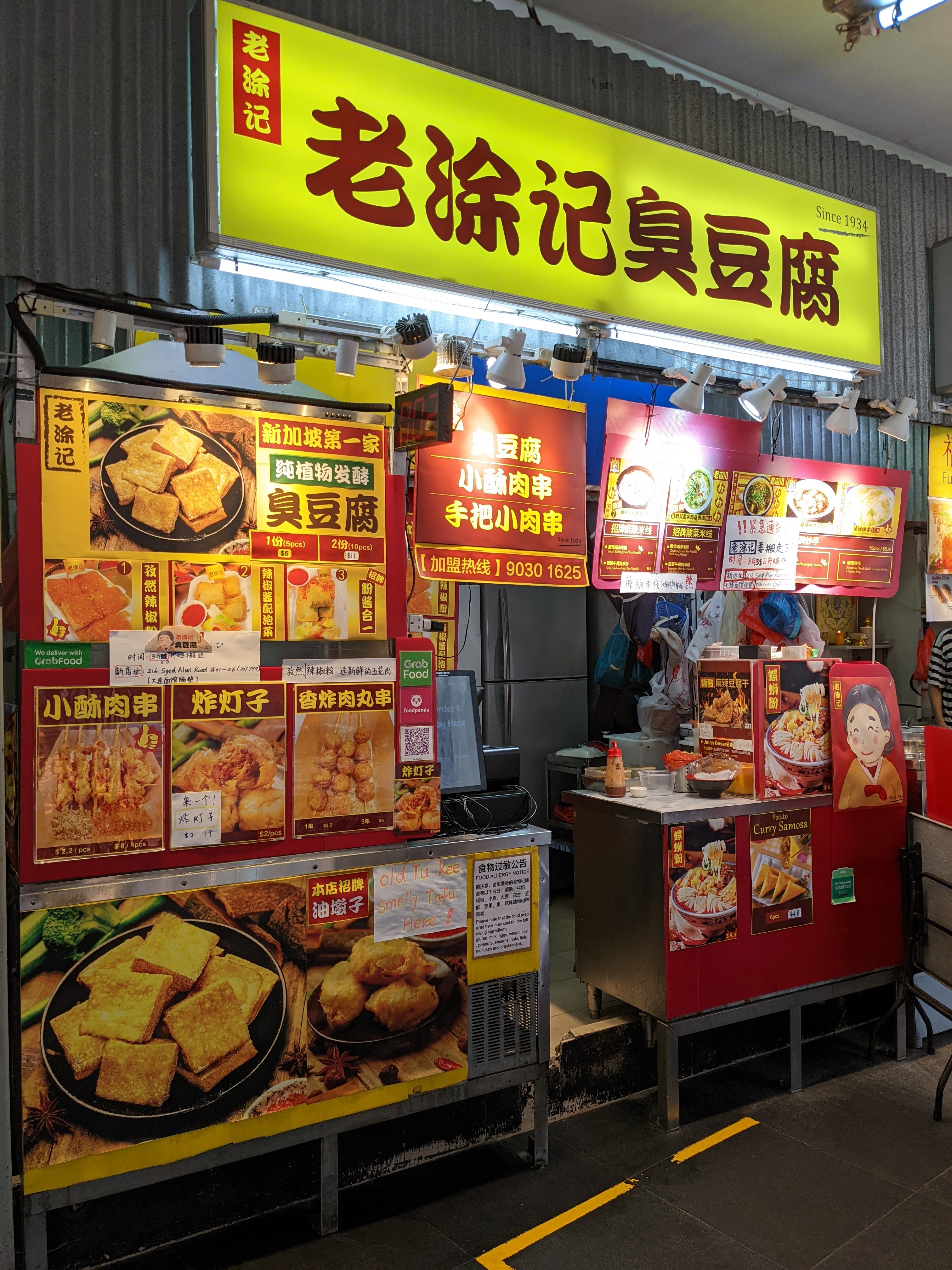Anhui is a province in central China, and before I started writing this episode, this was literally the only thing I knew about it. Wikipedia tells me the population is some 60 million, the name comes from the two cities of Anqing and Huizhou, and the capital is Hefei, none of which I can claim even the remotest familiarity with. Huizhou, though, is now a part of the city of Huangshan, “Yellow Mountain”, thus named after the scenic UNESCO World Heritage site and the province’s top tourist draw.
Anhui cuisine (徽菜 huī cài) may be one of the Eight Great, but it hasn’t made much of a dent outside China. Most sources handwave about wild herbs, but I suspect this is due to the fact that the adjective most commonly used to describe Anhui food is “stinky”. This is not just some random insult, mind you, since two of its most famous dishes both proudly start with the character 臭 chòu, “bad smell”.
Stinky dish #1 is stinky mandarin fish (臭鳜鱼 chòu guìyú), prepared by fermenting the freshwater fish in brine for eight days. The only restaurant in Singapore where I could find this on the menu was Xiao Yao Ge (逍遥阁, “Happy Pavilion”) out in Jurong, but sadly they’ve stopped selling it.
I had better luck with stinky dish #2, namely stinky tofu (臭豆腐 chòu dòufu), a dish Singaporeans associate with the night markets of Hong Kong and Taiwan, but it originally hails from Anhui. Now the word “stinky” is ambiguous in that many things like durian, blue cheese and wet socks have disagreeable aromas, but in Japanese, the character 臭 has the reading kusai, unambiguously derived from 糞 kuso, “shit”. And there’s no way to beat around the bush here: having previously sampled the stuff in Taiwan, I can confirm that stinky tofu smells like shit, in the most literal sense possible, a powerful, faecal funk. Science tells us that this is because they’re both redolent of indole, the chemical compound responsible for shit smelling like shit.


Unsurprisingly there are only a few stinky tofu shops in Singapore, but since the most famous, Geylang’s Mini Star, is very much Hong Kong style, I opted for the other one, Old Tu Kee (老涂记) in Singapore’s solitary street market, Bugis Village. Deathly quiet at Friday lunchtime, the shop serves up stinky tofu, some Sichuanese noodles and seems to have recently added another famously stinky dish, Guangxi river snail noodles. I opted for set #2, five pieces with chilli sauce, and girded my nostrils for the olfactory assault.


So how? To my surprise, my nose barely noticed: you can usually smell a stinky tofu joint before you see it, but here l’odeur de toilette was barely perceptible, more a whiff of a fart than a portapotty at a burrito festival. The Instagram-friendly serving complete with flag was cooked to order (I was customer #4 today), very crispy/crumbly on the outside and soft on the inside. The tofu was an off-white greyish color, but still reasonably firm, with a hint of a funky, slightly sour aftertaste that haunted my burps for the next hour or so afterward. The chilli sauce was quite mild, but cut the oil nicely, as did the pickled cabbage served on the side. All in all, inoffensive and quite edible, but I’m unlikely to become a regular.


To cleanse my tastebuds and nostrils, I headed to the only actual Anhui shop I could find in the country, namely Gulixiang Cooked Food (骨里香熟食 Gǔlǐxiāng shúshí) at People’s Park. Hailing from Fuyang, Anhui, the franchise’s name translates to “Bone-In Fragrance”, and they’re above all known for their braised chicken dishes, braising being a classic Anhui technique (also used by half of China, it must be said). Here in Singapore, they also retail the Harbin red sausages I sampled in the Heilongjiang episode and a few odds and ends like chicken feet, but the menu is dominated by pork parts: skin, face, snout, trotters, you got it.



I picked up a smoked pig trotter (熏猪蹄) for $5, brought it home, peeled it open and cracked open a bottle of Jing-A Worker’s Pale Ale to go with it. “Now wait a moment”, I hear you ask, “what does a hip Beijing microbrewery named after the capital’s license plate (京A) have to do with Anhui?” Well, turns out Carlsberg acquired a stake in 2019 and started manufacturing it in bulk at their shiny new 100,000-hectolitre brewery in Tianchang, Anhui, a thousand km south of the capital, and this is where my bottle came from as well.
My Anhui-in-Singapore pig trotter was a bit of a challenge to eat, since the intimidating exterior hides a mess of bones, collagen and cartilege. There wasn’t much in the way of smoke flavour, but the odd morsel of meat lurking in there was quite tasty, and I was reminded of Korean jokbal (족발), a similar soy sauce braised trotter treat, although that’s usually served deboned instead of making you do the work. As for the Beijing-in-Anhui Worker’s Pale, it was rather too hoppy for me, Jing-A’s Mandarin Wheat is much more to my liking.
I’m a little tempted to return to Gulixiang and try an entire roast chicken next time. But “the greedy come to a shitty end” (Ahneella on paskainen loppu), say the Finns, so it’s time to draw this stinker of an episode to a close. Onward!